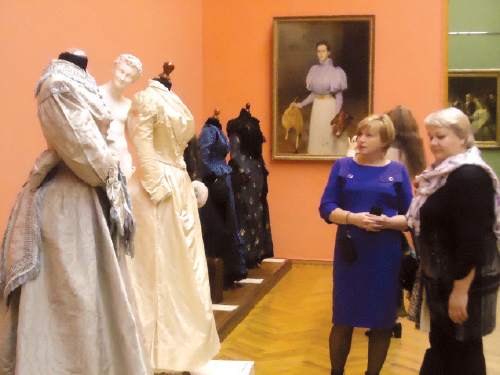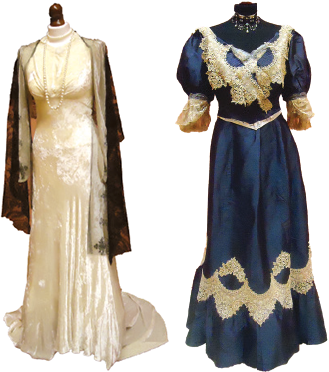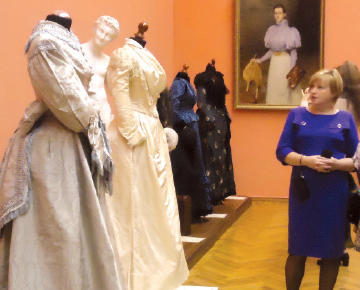Anyone interested in modern women’s fashion should visit the National Art Museum’s BELLE ÉPOQUE: West European Fashion of the Late-19th — Early-20th Century, from the Private Сollection of Igor Surmachevsky. It displays such elegant style that many of contemporary fashion proposals hopelessly fade.

Opportunity to move into beautiful past
The exhibition is elegance personified, exploring the most beautiful costumes from the period known as the ‘Belle Époque’: the Silver Age for Russian poetry and the Golden Age for aeronautics in Europe. Automobiles were just taking to the streets and Paris’ cafe life was bustling, with sparkling cabaret setting the trend in dance and music. Artistic photography was developing, gradually passing into the innovation of cinematic film. Symbols of that epoch include the cast-iron web of the Eiffel Tower, and the magnificent dream of conquering the oceans — such as on the giant steamship Titanic. The USA called it the Titanic Era.
The exhibition’s focus is fashion, and the blossoming of ‘haute couture’, which elevated sewing to an art. The late-19th century saw the great Charles Worth reigning over the sewing Olympus of Paris, alongside a new wave of designers: Paul Poiret, Coco Chanel, Emile Pingat, Gustave Beer and Jeanne Paquin.

Styles are feast for the eyes
The exhibition tells visitors about the World Paris Fair of 1900, where 20 ‘haute couture’ fashion houses already demonstrated their beautiful creations. The House of Worth was unprecedented in interweaving magnificent decorations into each costume, including jewels. Exotic feathers were used by Paul Poiret, and delicate lace was countered by magnificent heavy fabrics and velvet. The ‘S’ shape line of modern shifts from interior decor into the formation of female silhouette. Colours ranged from deepest garnet and other jewel shades, to subtle tobacco, shades of grey and cornflower-blue, and gold.
Women’s beauty aspired towards the unearthly — like a nymph, mermaid, a beautiful flower, or firebird. Meanwhile, it was ‘en vogue’ to appear fragile, rather than hearty.

The ideal feminine silhouette followed the ‘hourglass’ shape, achieved with a corset tightened severely to create a wasp waist of as little as 35cm. This hardly attainable ideal was aided by the wearing of full skirts, with bustles. In the late 19th century, this included the wearing of hoops beneath skirts, so that the wearer appeared to glide rather than walk. Unsurprisingly, much time and more than one pair of hands were required to wear such costumes, marking them out as the prerogative of the wealthy. No woman could lace her corset or fasten numerous buttons — on dresses, jackets and boots — unaided. In addition, every woman of true bearing would complete her outfit with an ornamented hat, decorated with flowers, bows, feathers and long pins. Gloves, fans, handbags, a lorgnette, and, in fine weather, a parasol, were obligatory accessories.
The charm of that beautiful age lasted only briefly, just a quarter of a century: from 1890 to the start of the WWI. But these decades, as intoxicating as fresh spring air in early May, encouraged the blossoming of culture and heralded a new age in archaeology and politics. The terrible years of WWI brought great nostalgia for the serenity of those peaceful years, named thereafter the ‘belle époque’.











